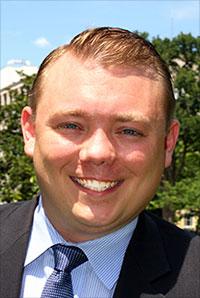 A NATIONAL POPULAR VOTE IS CLOSER THAN YOU THINKBy MATT MACKOWIAKJanuary 30, 2022
While it any federal “voting rights” legislation is unlikely to pass, in recent weeks several elected officials, including the second-ranking Republican U.S. senator, John Thune of South Dakota, and the House majority whip, Democrat Jim Clyburn of South Carolina, have expressed interest in reforming the Electoral Count Act. This would clarify the role the vice president — in their role as president of the Senate — plays when certifying the vote of the Electoral College. These debates are renewing discussion and momentum for moving to a national popular vote, if not by the 2024 presidential election, then by 2028. How would it work? States are passing legislation or initiatives awarding their electors to the winner of the national popular vote. Once the number of states in the compact reaches 270 electoral votes, presidential elections will transition from the current method — 48 states use what is called the winner-take-all method of awarding electors while Maine and Nebraska award electors by congressional district — to a national popular vote. How close is this to becoming a reality? Closer than you probably think. The National Popular Vote Interstate Compact has been adopted by 16 states, including the District of Columbia, totaling 195 electoral votes. Most recently, Colorado joined the compact and an initiative petition was launched in Michigan. The compact is a binding, actionable and realistic reform that utilizes the constitutional power of state legislators to select a method for awarding electors without abolishing the Electoral College. The pathway from 195 to 270 is not impossible to see. The compact has passed in at least one house of state legislatures in eight additional states, accounting for more than 70 electoral votes. It is only a matter of time before those states also join the compact. Notably, the compact does not take effect until it reaches the threshold of 270 electoral votes. Several questions are raised about this proposal. Let’s examine them. You may believe this would benefit cities. But the data shows otherwise. Only one-sixth of the country lives in the top 100 cities. One-fifth live in rural areas. California and New York together only have 18 percent of all voters. According to national data, the five biggest cities in the country account for only about 6 percent of the national population. The top 20 cities account for only about 10 percent of the population. Even the top 50 cities only account for 15 percent of the nation’s population. You may think it would lead to TV ad campaigns focused almost exclusively on the largest TV markets. But big cities could never dominate under a national popular vote, unless you reject basic math. You may think the Constitution prevents such a plan, but it does not. In fact, the winner-take-all method presently used by 48 states to award their electors is not prescribed by the Constitution. Likewise, the congressional district method also doesn’t appear anywhere in the text. This compact still respects the constitutional role of the states in selecting the president, but it does so through a popular mandate. It’s the best of both worlds. It would also force a Democratic nominee to campaign in red states and a Republican nominee to campaign in blue states. That would benefit voters. You may think that a national popular vote would advantage Democrats. But I can find no hard evidence that this is the case. Consider since 1988, 38 states have voted the same way in presidential elections, giving Democrats an automatic 242-102 electoral vote advantage and placing them a mere 28 electoral votes from clinching the presidency even before the first votes are cast. Instead of six to eight battleground states, where candidates spend all their time after winning their nominating contests, candidates could instead develop unique and tailored strategies for a candidate’s time, allocation of resources, and messaging strategies. Why should a voter in Missouri or Utah be less relevant than a voter in Michigan or Florida? Under the National Popular Vote Interstate Compact, every vote would have equal value, and neither party would have an automatic electoral advantage. America would finally elect a president of the United States chosen by all Americans.
|
|||||
